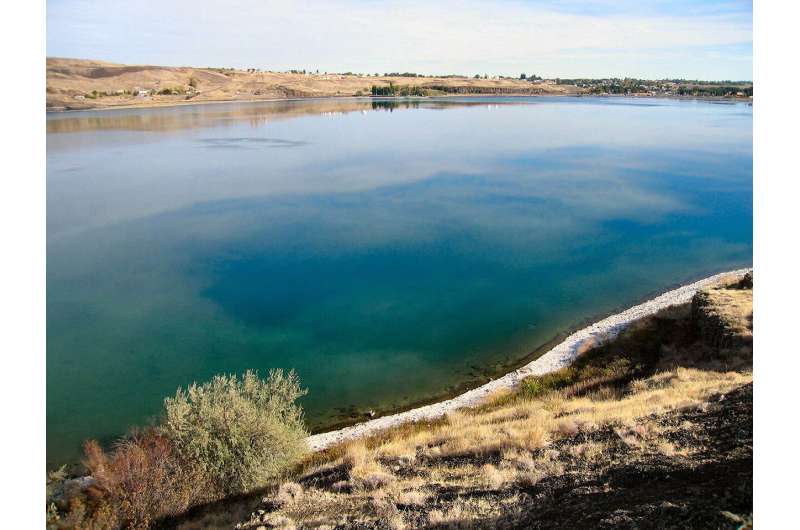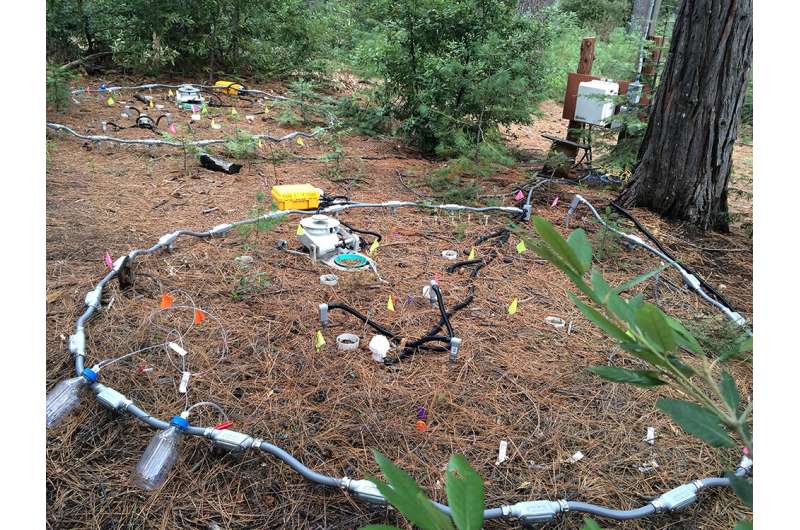What happens underground influences global nutrient cycles

Through the Facilities Integrating Collaborations for User Science (FICUS) program, two Department of Energy (DOE) Office of Science national user facilities—the Environmental Molecular Sciences Laboratory (EMSL) and the DOE Joint Genome Institute (JGI)—have selected 11 proposals for support from 53 received through a joint research call. Submitted proposals addressed one of the following focus topic areas: Biofuels and bioproducts, Biogeochemistry, and Inter-organismal interactions.
Algal research features prominently among the eleven proposals selected with four focused on biofuels and bioproducts. For example, Sabeeha Merchant of the University of California, Berkeley studies the alga Chlamydomonas reinhardtii, one of the JGI's Flagship genomes. She and her colleagues have generated a high-quality, phenotyped mutant library in Chlamy, as the alga is colloquially known by researchers. A missing gene from this mutant library leads to photosynthetic defects, offering insights into how algal ponds can regulate photosynthesis under fluctuating environmental conditions. The team aims to functionally link gene families to photosynthesis and discover gene functions that may be relevant to both algae and land plants.
Within the biogeochemistry group, one of the four proposals selected is led by Eoin Brodie of Lawrence Berkeley National Laboratory (Berkeley Lab). As part of the research being conducted through the Belowground Biogeochemistry Scientific Focus Area (SFA), supported by the Terrestrial Ecosystem Science (TES) program within the DOE Office of Biological and Environmental Research (BER), Brodie and his colleagues have been running a soil-warming experiment in the Sierra Nevada mountain range since 2014 to learn more about the microbial responses and feedbacks to warming through the whole soil profile. The goals of their FICUS proposal include assessing the distribution of genome-derived functional traits through the soil profile and their relationships with soil properties that co-vary with depth and with changes in warming and other environmental conditions.

Among the three selected proposals with a focus on inter-organismal interactions is one from Jason McDermott of Pacific Northwest National Laboratory (PNNL). The proposal focuses on an aspect of the Phenotypic Response of the Soil Microbiome to Environmental Perturbations under PNNL's Soil Microbiome SFA, which aims for a systems-level understanding of the soil microbiome and its phenotypic response to changing moisture. Through their FICUS proposal, McDermott and his colleagues are interested in determining how soil moisture influences the soil microbiome and biochemical reaction networks, and also assessing the role of viruses in the soil microbiome.
Another accepted proposal in the inter-organismal interactions focus area comes from Malak Tfaily of the University of Arizona. Her team aims to use data from an interdisciplinary field campaign taking place at the Biosphere 2 Tropical Rainforest (B2 TRF) biome at the University of Arizona to learn more about climate change feedbacks including drought and increasing temperatures on tropical rainforests, which play a key role in the global carbon cycle. Tfaily's team is specifically interested in conducting a controlled drought and multi-isotope labeling experiment, and the data will allow them to better understand the impacts of drought on plant metabolism and particularly, what happens in the rhizosphere where plants, microbes and soil interact below the ground, influencing the production of microbial greenhouse gases and volatile organic compounds.
This was the seventh FICUS call between EMSL and JGI since the collaborative science program was formed in 2014 by the Office of Biological and Environmental Research (BER) to harness the combined expertise and resources of two of the national user facilities stewarded by the DOE Office of Science in support of DOE's energy, environment, and basic research missions. Through the EMSL-JGI FICUS calls, users can combine EMSL's unique imaging, omics and computational resources with JGI's cutting-edge genomics, DNA synthesis and complementary capabilities. Because the facilities offer a breadth of characterization and analytical power, researchers are not expected to be expert users on all of the scientific instruments. Instead, members of the scientific staff from both user facilities work with the researchers to assess their needs and help them with their methodologies, experiments and visualizations.
The accepted proposals will start on October 1, 2019. The full list of accepted proposals is available here on EMSL's site and here on JGI.
Provided by DOE/Joint Genome Institute


















